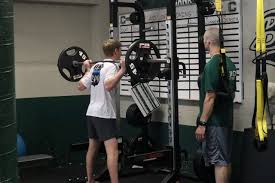Brazilian Jiu-Jitsu (BJJ) is a demanding martial art that requires a blend of technical skill, strategic thinking, and physical conditioning. While technical training is crucial, strength and conditioning play a vital role in enhancing performance and preventing injuries. This article explores essential strength and conditioning tips tailored specifically for BJJ athletes, aiming to optimize their physical capabilities on the mat.
1. Understanding the Demands of BJJ
Before diving into specific conditioning tips, it’s important to understand the unique physical demands of Brazilian Jiu-Jitsu:
- Explosive Strength: BJJ requires short bursts of explosive strength for moves like takedowns, sweeps, and submissions.
- Endurance: Matches can last several minutes, requiring athletes to maintain stamina and energy throughout.
- Flexibility and Mobility: BJJ involves a wide range of movements, necessitating flexibility and joint mobility.
- Grip Strength: A strong grip is crucial for controlling and manipulating your opponent.
2. Key Components of a Strength and Conditioning Program

A well-rounded strength and conditioning program for BJJ athletes should focus on several key components:
2.1. Functional Strength Training
Functional strength training enhances the muscles and movements used in BJJ. Focus on exercises that mimic the sport’s demands.
Recommended Exercises:
- Deadlifts: Build overall strength and power in the posterior chain.
- Squats: Develop leg strength and explosive power.
- Pull-Ups: Improve upper body strength and grip endurance.
- Kettlebell Swings: Enhance explosive hip power and endurance.
2.2. Explosive Power Development
Explosive power is crucial for executing rapid movements and transitions during a match.
Recommended Exercises:
- Olympic Lifts (Clean and Jerk, Snatch): Develop explosive strength and power.
- Box Jumps: Improve lower body power and explosiveness.
- Medicine Ball Slams: Increase upper body explosive power and coordination.
2.3. Endurance Training
Cardiovascular endurance is essential for maintaining high performance throughout a BJJ match.
Recommended Exercises:
- High-Intensity Interval Training (HIIT): Boost cardiovascular fitness and simulate the intensity of BJJ bouts.
- Running or Cycling: Improve overall endurance and stamina.
- Rowing: Provides a full-body workout that enhances aerobic capacity.
2.4. Flexibility and Mobility Work
Flexibility and mobility are crucial for executing and defending techniques in BJJ.
Recommended Exercises:
- Dynamic Stretching: Incorporate dynamic stretches before training to improve range of motion.
- Foam Rolling: Use a foam roller to release muscle tension and enhance recovery.
- Yoga: Improve flexibility, balance, and overall body awareness.
2.5. Grip Strength Training
Strong grips are vital for controlling and manipulating your opponent during a match.
Recommended Exercises:
- Farmer’s Walk: Build grip endurance and overall strength.
- Towel Pull-Ups: Enhance grip strength and forearm endurance.
- Finger Curls: Strengthen the fingers and forearms for better grip control.
3. Structuring Your Strength and Conditioning Routine
Creating an effective strength and conditioning routine involves careful planning and balance. Here’s a sample weekly program tailored for BJJ athletes:
3.1. Sample Weekly Program
Day 1: Functional Strength and Power
- Warm-Up: Dynamic stretching, light cardio (10 minutes)
- Deadlifts: 4 sets of 6 reps
- Squats: 4 sets of 8 reps
- Olympic Lifts: 3 sets of 5 reps (Clean and Jerk or Snatch)
- Kettlebell Swings: 3 sets of 12 reps
- Cool-Down: Foam rolling, static stretching (10 minutes)
Day 2: Endurance and Conditioning
- Warm-Up: Light jogging or rowing (10 minutes)
- HIIT Workout: 20 minutes of intervals (e.g., 30 seconds sprint, 30 seconds rest)
- Running or Cycling: 20 minutes at moderate intensity
- Cool-Down: Light stretching and breathing exercises (10 minutes)
Day 3: Flexibility and Mobility
- Yoga Session: 45-60 minutes focusing on flexibility and balance
- Foam Rolling: 15 minutes on major muscle groups
- Dynamic Stretching: 15 minutes of full-body stretches
Day 4: Grip Strength and Functional Training
- Warm-Up: Light cardio and dynamic stretching (10 minutes)
- Farmer’s Walk: 3 sets of 1-minute walks
- Towel Pull-Ups: 3 sets of 8 reps
- Finger Curls: 3 sets of 15 reps
- Grip Strength Drills: 15 minutes
- Cool-Down: Static stretching and foam rolling (10 minutes)
Day 5: Active Recovery
- Light activity: Swimming, walking, or easy biking (30 minutes)
- Stretching: Gentle stretches to promote recovery (15 minutes)
Day 6: Combination Workout
- Warm-Up: Dynamic stretching and light cardio (10 minutes)
- Circuit Training: Combine strength, power, and endurance exercises in a circuit format (45 minutes)
- Core Training: Focus on exercises like planks and Russian twists (15 minutes)
- Cool-Down: Foam rolling and static stretching (10 minutes)
Day 7: Rest
- Focus on complete rest or very light activity like walking or gentle stretching to allow for recovery.
4. Nutrition and Recovery

Proper nutrition and recovery are integral to any strength and conditioning program. BJJ athletes should focus on:
4.1. Balanced Diet
- Protein: Essential for muscle repair and growth (e.g., lean meats, fish, legumes).
- Carbohydrates: Provide energy for intense training sessions (e.g., whole grains, fruits, vegetables).
- Healthy Fats: Support overall health and hormone function (e.g., avocados, nuts, olive oil).
4.2. Hydration
- Water Intake: Stay hydrated throughout the day, especially before, during, and after workouts.
- Electrolytes: Replenish electrolytes lost through sweating with beverages like coconut water or sports drinks.
4.3. Adequate Rest
- Sleep: Aim for 7-9 hours of quality sleep per night to support recovery and performance.
- Active Recovery: Incorporate light activities and stretching to facilitate muscle recovery.
5. Conclusion
Strength and conditioning are crucial components of a successful BJJ training regimen. By focusing on functional strength, explosive power, endurance, flexibility, and grip strength, athletes can enhance their performance on the mat and reduce the risk of injuries. A well-structured routine, combined with proper nutrition and recovery strategies, will ensure that BJJ athletes are in peak physical condition and ready to excel in their sport. Embrace these tips and watch your BJJ game reach new heights in both skill and strength.



